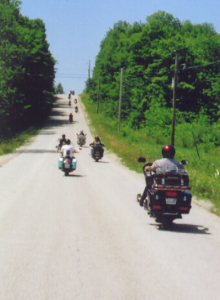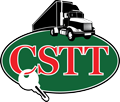Motorcycle Survival Skills
December 3, 2014
Spring has sprung and the flowers are in full bloom here on Vancouver Island. With spectacular weather on the Easter Weekend, motorcyclists are on our roadways. With the increased mix of vehicles making up traffic, drivers should understand the wide array of vehicle characteristics that generate and govern traffic patterns.
Since the inception of the motor-vehicle these two & three wheeled vehicles have vied for our road space. For some, these vehicles provide an alternative to the bigger expenses associated with cars. Motorcycles are smaller, faster, more fuel efficient and the initial outlay of money can be considerably less than a car. For others, the joy of a motorcycle is simply the exuberance of riding. It provides a sense of inexplicable freedom that otherwise eludes them.
Still, the dangers of riding a motorcycle are much higher than those associated with cars. In the United States, the National Highway Traffic Safety Administration (NHTSA) states that “per vehicle mile traveled, motorcyclists are about 35 times more likely than passenger car occupants to die in a traffic crash.”[1] In other words, if involved in a crash or collision the rider is at a much greater risk of death or injury.
What are some of the steps that other motorists can take to ensure that motorcyclists are noticed when they drive? First, always signal and shoulder check when making any lateral move. Because of their small size, it is easy for motorcycles to sit or sneak into blind spots. And only by shoulder checking will smaller vehicles be seen. Be more vigilant when scanning intersections. Many riders are killed or injured when proceeding through an intersection and another vehicle turns left in front of them. Thus, it is imperative to scan more thoroughly before executing turns.

For the rider, there are a number of ways to protect yourself and ensure that your ride is safe. The American Automobile Association provides the following tips to ensure that motorcyclists are seen:[2]
- Make Yourself Visible
- – Seeing and being seen remains the key for safe riding. Follow the left tire track of the vehicle in front of you to avoid other motorists’ blind spots. Wear bright, reflective clothing (yellow with reflective tape is recommended). Always assume that other drivers don’t see you. When executing turns and other manoeuvres in and around traffic, attempt to get eye-contact with other drivers to ensure that they’ve seen you.
- Share the Road, Not the Lane
– Never share a lane with another moving vehicle and never take short cuts between stopped or slow moving vehicles.
- Light Up
– In Canada, on bikes manufactured after 1990 the headlights come on when the motor is started. If you are driving an older bike, use the headlights or supplemental running lights at all times. As well, after market units are available that will cause the front headlight to pulse, thus making your vehicle more visible during the daylight hours.
- Go with the Flow
- – Drive at the speed of traffic to make yourself more obvious to other vehicles. As well, be predictable: erratic driving behavior is unsafe owing to the fact that other traffic cannot anticipate your movements.
- Treat Yellow Lights as Red Lights
- – Stop for yellows, don’t speed up. At one and the same time however, be conscientious of tailgaters. Motorcycles can be difficult to spot in an intersection, and often other vehicles will make the left-hand turn when the light goes to yellow. If you chose to charge the light, the risk you’re taking is astronomical.
- Know How to Stop
- – In empty parking lots or other safe locations, periodically practice quick stops without locking up the tires. Use the front and rear brakes independently of each other. As well, if your motorcycle is equipped with an anti-lock braking system (ABS) learn how to use this feature. Courses also are available to refresh motorcycle riding skills.
- Drive Defensively, Not Aggressively
- – Be respectful and courteous to other road users. Avoiding antagonistic behaviors like stopping short, tailgating, driving on the white line between vehicles, or cutting off drivers. If you practice courteous driving, other motorists often respond in kind.
- Predict Other Drivers’ Actions
- – Anticipate a vehicle’s change in direction by watching the driver’s head movements, hand motions on the steering wheel or the changing direction of the vehicle’s front tires. As well, erratic changes in speed, wandering in their lane and inexplicable brake applications all suggest that the driver is either lost and looking for a location, or is intoxicated in some capacity.
- Protect Yourself
- – Wear a helmet and protective clothing such as jackets, gloves, boots, and pants to minimize injuries in the event of a collision or spill.
- Be Alert
- – Constantly look for changes in the road surface, and at night watch for sudden taillight movements of the vehicle in front. The taillights of the front vehicle could potentially warn you of changes in the road surface.
Riding a motorcycle is an exhilarating experience of discovery, freedom and wonder. For others, it is a way of life – “Live to ride; ride to live”. Others see a motorcycle as a form of transportation. Whatever, your reason for riding a motorcycle, the machine possesses inherent dangers, and these must be taken into consideration to make your journey as safe as possible. Minimize risk through proper training, observation, and roadcraft.
[1]Fatal Two Vehicle Motorcycle Crashes, National Center for Statistics and Analysis 2007 – http://www-nrd.nhtsa.dot.gov/Pubs/810834.pdf, p 4.
[2]Amercian Association of Automobiles, 2011, “10 Safety Tips for Enjoying Motorcycle to Work Day”, available from: http://aaafoundation.blogspot.ca/2011/06/10-safety-tips-for-enjoying-motorcycle.html
(Photo by J.P. C. / CC BY)





